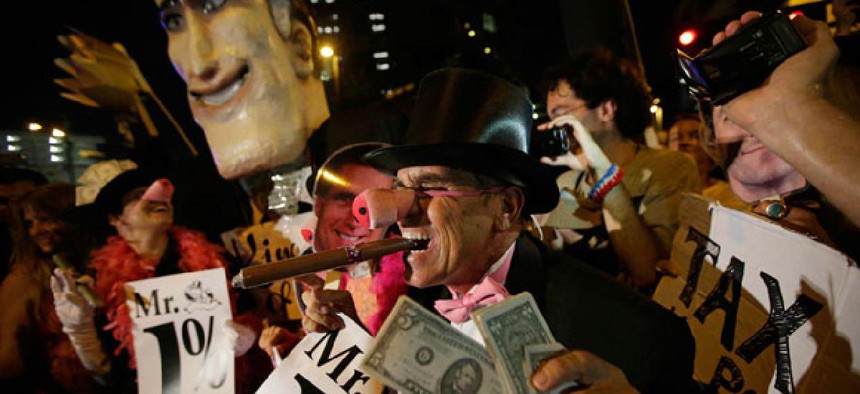Undercover police used smartphones to keep tabs on protests in Tampa

Protestors marched during the Republican National Convention. Dave Martin/AP
Cell phones, tablets could be wave of future for police, firefighters.
A network that allowed undercover police to use smartphones and tablets to monitor and communicate during protests at the Republican National Convention is giving new meaning to having “eyes on the ground.”
Police have long maintained an undercover presence at major gatherings, including political protests — not to monitor free speech, they are quick to note, but to make sure everyone is safe.
At this year’s Republican National Convention in Tampa, police tried out a powerful new tool that can turn officers’ smartphones into multimedia surveillance and communication platforms. Emergency responders around the country think the use of this technology could be the wave of the future and Tampa provided what many see as a successful field test. Tools that are often featured in spy thrillers such as the Bourne Identity movies could eventually become widely available in local police stations.
In Tampa, emergency responders used specialized apps and software to turn off-the-shelf smartphones and tablets into tools for sending real-time video, voice, and data. The effort involved an interoperable network that used technology from several private companies.
That allowed undercover officers to transmit real-time video, for example, of protesters as they moved about the streets.
“The specialized applications gave law enforcement an advantage, allowing police officers to use everyday devices in a strategic and tactical way,” said Sgt. Dale Moushon, with the Intelligence Unit of the St. Petersburg Police Department, which helped bring the system to the area. Use of the network had not been publicized until now because police were wary of undermining security at the convention.
While undercover police in most protests are often easily identified by their earpieces or microphones in their sleeves, Moushon told National Journal that using cell phones allowed police to remain completely undetected. “Everyone has a phone, so officers blend in easier,” he said.
That also makes the situation safer for police officers, he said. The protests in Tampa never became as large as expected, nor did they get out of hand. But Moushon said that there were several instances where police were able to monitor potential trouble spots thanks to the network.
He also pointed to an instance in which an officer was preparing to take a picture of a suspicious person so staff could use facial-recognition software to identify the person. Instead, the person happened to pull out a document that included his identifying information that was then captured in real-time by the officer’s live video feed. “That saved us a lot of time,” Moushon said.
Law enforcement officers from Pinellas and Hillsborough counties used the next-generation broadband network to send “highly secure, encrypted voice, video, and data communications, as well as an evidence-quality, permanent recording of all data collected at the event,” according to the developers of the network. In addition, the system brought together fixed-surveillance camera feeds, live video transmitted from smartphones, global-positioning system information, and traditional radio traffic.
As technology has improved, firefighters, police, and medical personnel have been looking for ways to send each other videos, pictures, and other data, in addition to voice communication.
The network in Tampa was used with special permission from the Federal Communications Commission. It was part of an effort to eventually develop a similar $7 billion National Public Safety Broadband Network for everyday use across the country.
In addition to law-enforcement surveillance and communication, a future network could allow firefighters to transmit building plans to each other, or allow paramedics to review multimedia health records.
Besides a range of law-enforcement agencies, the Florida network was developed by a group of companies that included Nokia Siemens, Reality Mobile, Raytheon, and Cisco.
“Our project was a first step in an emerging era for enhanced communications and information sharing among public safety, law enforcement and other national-security officials,” Cisco Director of National Security Chris Josephs said in a statement.
NEXT STORY: Sequestration could hurt cyber defense programs





